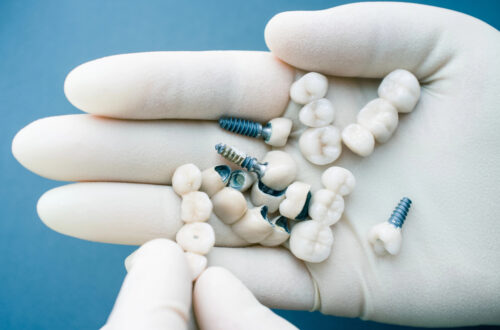
Revolutionizing Restorative Dentistry: Innovations in Dental Crown and Bridge Manufacturing
Restorative dentistry has witnessed remarkable advancements over the past few decades, transforming how dental crowns and bridges are manufactured. These innovations have not only improved the aesthetic appeal and functionality of these dental restorations but also enhanced patient comfort and satisfaction. As a result, more individuals, including celebrities, are embracing dental treatments that can give them a confident smile. This article explores the latest technologies and materials in dental crown and bridge manufacturing, highlighting their significance in modern dentistry.
Understanding Dental Crowns and Bridges
Before delving into innovations, it’s essential to understand what dental crowns and bridges are. A dental crown is a custom-made cap placed over a damaged tooth to restore its shape, size, strength, and appearance. Crowns are often recommended after root canal treatment, severe decay, or when a tooth is fractured. On the other hand, a dental bridge is a fixed prosthetic device used to replace one or more missing teeth. Bridges anchor onto adjacent teeth or dental implants, providing both functional and aesthetic benefits.
The Need for Innovation
Traditional methods of manufacturing dental crowns and bridges often involved labor-intensive processes that could be time-consuming and less precise. These limitations not only increased the cost of treatments but also led to longer waiting times for patients. With the growing demand for quicker, more effective solutions, dental professionals began to seek innovative techniques that could improve the efficiency and quality of dental restorations.
Advances in Technology
One of the most significant innovations in dental crown and bridge manufacturing is the advent of Computer-Aided Design and Computer-Aided Manufacturing (CAD/CAM) technology. CAD/CAM allows dentists and dental technicians to create precise digital models of patients’ teeth. This process typically involves the following steps:
1. Digital Scanning: Instead of traditional impressions, which can be uncomfortable for patients, dental professionals use digital scanners to create a 3D image of the teeth and gums. This method is more accurate and significantly reduces the time spent on making impressions.
2. Designing the Restoration: The scanned images are then imported into CAD software, allowing technicians to design crowns and bridges with exceptional precision. This level of detail helps ensure a better fit, reducing the need for adjustments.
3. Milling and Fabrication: Once the design is finalized, a milling machine carves the crown or bridge from a solid block of material, such as ceramic or zirconia. This automated process not only speeds up production but also minimizes human error.
4. Finalization: After milling, the restorations are polished, stained, and glazed to match the patient’s natural teeth, ensuring aesthetic appeal.
Materials Matter
In addition to technological advancements, the development of new materials has significantly enhanced the quality of dental crowns and bridges. Traditionally, gold and porcelain were popular choices, but modern materials like zirconia and lithium disilicate have gained traction due to their superior strength and aesthetics.
– Zirconia: Known for its durability and biocompatibility, zirconia is a preferred material for both crowns and bridges. It can withstand significant biting forces, making it suitable for posterior teeth. Additionally, zirconia can be shaded to match natural teeth, providing a seamless appearance.
– Lithium Disilicate: This material offers excellent aesthetics, making it ideal for anterior crowns and bridges. Its translucency mimics natural tooth enamel, while its strength allows for thin, yet durable restorations.
The Impact on Patient Experience
The innovations in dental crown and bridge manufacturing have had a profound impact on patient experience. Shorter treatment times, improved comfort, and enhanced aesthetics have made dental procedures more appealing. Patients no longer have to endure the discomfort of traditional impressions or wait weeks for their restorations to be fabricated. Instead, with same-day dentistry options available through CAD/CAM technology, patients can receive their crowns or bridges in a single visit.
Moreover, these advancements have captured the attention of many celebrities who prioritize their smiles. From actors to musicians, public figures are increasingly opting for high-quality dental crowns and bridges that provide both durability and an aesthetically pleasing appearance. With their ability to enhance confidence and overall appearance, these restorations have become a popular choice among those in the limelight.
Sustainability and Future Trends
As the dental industry evolves, there is a growing emphasis on sustainability. Innovations in manufacturing processes aim to reduce waste and environmental impact. For instance, some companies are exploring the use of biodegradable materials for dental restorations. Additionally, advancements in 3D printing technology show promise for creating dental crowns and bridges with even greater efficiency and customization.
The future of dental crown and bridge manufacturing looks promising. As research and development continue, we can expect even more innovative materials and techniques to emerge. Enhanced integration of artificial intelligence and machine learning could further refine the design and production processes, leading to personalized restorations that meet each patient’s unique needs.
The innovations in dental crown and bridge manufacturing represent a significant leap forward in restorative dentistry. From the introduction of CAD/CAM technology to the development of advanced materials, these advancements have transformed how dental restorations are designed, fabricated, and delivered. As celebrities and everyday patients alike seek high-quality dental solutions, the impact of these innovations will undoubtedly continue to grow. Ultimately, the evolution of dental crown and bridge manufacturing not only enhances smiles but also improves the overall patient experience, making restorative dentistry more accessible and effective than ever before.



